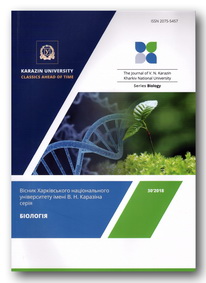Molecular genetic data in terms of associative and population genetics
Abstract
In studies on associative genetics of various multifactorial diseases, it is most often found that the minor allele’s frequency in the group of patients is higher than in the group of healthy people. Due to reduced adaptation, the minor allele manifests itself as a disease. In the group of patients, the number of homozygotes by major allele is reduced, the number of heterozygous carriers of the provocative allele is increased, and the frequency of homozygotes by the provocative allele is significantly increased. The aim of this article was to analyze the unusual result for SNP 1298A/C of the MTHFR gene in multiple sclerosis, previously obtained by one of the authors. The allele frequencies in the control group and in the group of multiple sclerosis do not differ, but the distribution of genotypes in the patients does not correspond to the Hardy–Weinberg ratio in compare to healthy people. Among patients, the number of heterozygotes is increased and the number of each homozygote is decreased. The increase in the proportion of heterozygotes can be explained by the presence of one provocative allele, but the large shortage of homozygotes for the minor allele is unclear. To explain this fact, the composition of the group of patients was analysed. The patients are of different ages, this group is heterogeneous in sex and form of multiple sclerosis, but none of these indicators has not be taken into account in the analysis of the distribution of genotypes. The age of the disease is a diagnostic sign and may depend on the genotype. The manifestation of multifactorial diseases depends on gender as well. Clinical forms of the disease usually have a different genetic basis. Due to the neglect of these conditions, a genetically heterogeneous group is formed, and any result, difficult for explanation, can be obtained. The lack of СС genotypes may be due to increased mortality, which reduces the probability of patients to be investigated in the sample. These facts once again indicate the need to form homogeneous groups for research on associative genetics.
Downloads
References
Armitage P., Berry G. (1994). Statistical methods in medical research. Blackwell Scientific Publications, Oxford. 620 p.
Atramentova L.A. (2015). Design and statistics of biological research. Kharkiv: NTMT. 269 p. (in Russian)
Ehyakonandeh H., Аtramentova L.A. (2020). Prognostic value of markers in associative genetics. The Journal of V.N. Karazin Kharkiv National University. Series "Biology", 34, 63–68. https://doi.org/10.26565/2075-5457-2020-34-7
Izadi S., Nikseresht A.R., Poursadeghfard M. et al. (2015). Prevalence and incidence of multiple sclerosis in Fars Province, Southern Iran. Iran J. Med. Sci., 40(5), 390–395.
Lunde H., Assmus J., Myhr K.M. et al. (2017). Survival and cause of death in multiple sclerosis: a 60-year longitudinal population study. Journal of Neurology, Neurosurgery, and Psychiatry, 88(8), 621–625. https://doi.org/10.1136/jnnp-2016-315238
Naghibalhossaini F., Ehyakonandeh H., Nikseresht A., Kamali E. (2015). Association between MTHFR genetic variants and multiple sclerosis in a Southern Iranian Population. Int. J. Mol. Cell Med., 4(2), 87–93.
Authors retain copyright of their work and grant the journal the right of its first publication under the terms of the Creative Commons Attribution License 4.0 International (CC BY 4.0), that allows others to share the work with an acknowledgement of the work's authorship.




